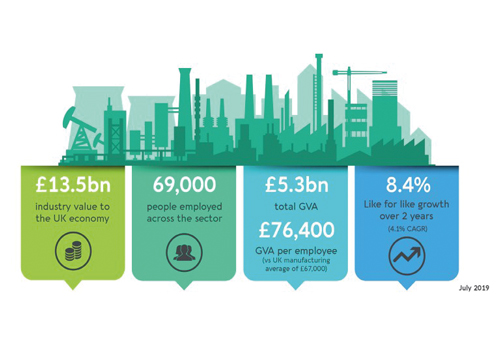David Stuart reports from a panel discussion that saw members of the UK photonics industry discuss opportunities and growth after the pandemic is over
No industry will be left completely unscathed by the Covid-19 pandemic but the photonics sector looks to have fared better than many, with plenty of reason to be optimistic for the future. This was the message that emerged from the recent panel discussion ‘Opportunities for Additional Photonics Growth Post Covid-19’, part of the online Spie Photonex and Vacuum Expo, which took place from 5 to 9 October.
The panel was chaired by Anke Lohmann, co-founder of Anchored In, and included John Lincoln and Chris Dorman of Photonics Leadership Group (PLG), Tom Harvey from the National Healthcare Photonics Centre, and David Lara of Microsoft’s Project Silica.
The optimistic tone for the panel discussion had been set by two earlier presentations on the impact of Covid-19 on the photonics sector. Stephen Anderson, director of industry development at Spie, had provided an industry update which reported that the weighted average revenue for the sector in the second quarter of 2020 had only been down three per cent, with similar predictions by analysts for revenues in 2020 overall. Not only can this be considered relatively good news during a global pandemic, but below the headline figure the response was even more positive: the majority of analysts actually predicted growth would be either flat or positive for 2020, typically predicting two to three per cent growth.
The generally positive outlook was also reiterated in the results of John Lincoln’s survey of the photonics sector in the UK: 92 per cent of photonics manufacturers are operating at over 75 per cent capacity, and there is an increased positive outlook about the future. Both presentations emphasised, however, the wide range of experiences in the sector. While industry may have quickly returned to full production, the universities have faced greater disruption. While some photonic companies expected to see rapid growth in revenues, others predicted a loss.
Predictably in a global pandemic, healthcare quickly moved up the political agenda, and received a lot of investment. There has been a rapid transformation in services, with an acceleration of the shift to online services. Tom Harvey highlighted the rise in digital health care, the delivery of health care in primary care settings, and the trend towards preventative medicine. These are not changes that Harvey sees reverting back, rather we can all expect to see our doctors over Zoom in the future. Those photonics technologies associated with supporting these changes will become highly relevant, whether that’s optical point-of-care diagnostics, deep tissue imaging, or PCR testing.
The move towards the provision of digital health services is part of the wider increase in digital services that have been accelerated by the pandemic, and the rapid increase in the quantity of data that is being created needs new and better data storage solutions. As David Lara pointed out, it has produced both challenges and opportunities for the photonics industry. He felt the relevance of Microsoft’s Project Silica, which uses femtosecond lasers to store data in glass, had become more prominent, but at the same time ensuring the same rate of progress was achieved during the pandemic has been a challenge. One of the things they found however, was that the necessity to overcome challenges helped bond the team together.
Despite the general optimism, the fact that there was still potential disruption to come was also recognised by the panel. In particular, universities and the ongoing pipeline of people and researchers that they produce provoked a lot of discussion. Chris Dorman was concerned about access to labs in the universities because it could have an impact further down the line, and John Lincoln pointed out the difficulties universities were facing as large organisations having to balance the needs of both undergraduates and postgraduates. There was also the potential future disruption to supply chains. Tom Harvey pointed to the rapidly changing supply chains for the NHS during the pandemic, with supply chains reorganising at the local level, and that there would be a need for greater consideration of their resilience and how easily they may be reconfigured in the future. Harvey also pointed out the potential for market distortions in the future due to the large amount of investments that had been made in government spending.

The UK photonics industry at a glance. Created by the Photonics Leadership Group
While the government stimulus for particular areas of research could create hotspots for certain areas of research, for Dorman the long-term trends of the photonics industry remain unchanged: the miniaturisation of mobile technology, and the ongoing need for more data and communication. The migration of the supply chain and the manufacturing process from traditional technologies to photonics and laser technologies continues. Undoubtedly these underlying trends feed into the broadly positive outlook for the sector as a whole. As David Lara pointed out in his summary of the opportunities for photonics: photonics is a key enabling technology.
Overall the outlook for the photonics sector as it faces the second wave of COVID-19 is challenging but with plenty of opportunities. As John Lincoln put it: ‘It’s not all doom and gloom out there, actually it’s a great and encouraging time.’


